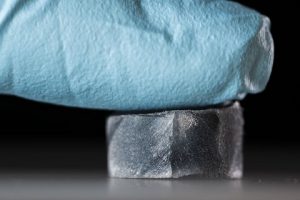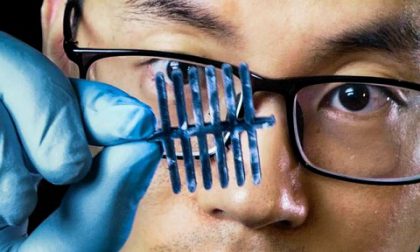
Cellulose soaked in a carefully designed polymer mixture acts as a sensor to measure pressure, temperature and humidity at the same time! The measurements are completely independent of each other. The sensor may be highly significant in fields such as robotics, healthcare and security.
Research until now has integrated different sensors into the same circuit, which has presented several technical challenges, not least concerning the user interface.
Based on a news that Scientists at Linköping University published, scientists in the Laboratory of Organic Electronics under the leadership of Professor Xavier Crispin have successfully combined all three measurements into a single sensor.
The ability to measure pressure, temperature and humidity is important in many applications, such as monitoring patients at home, robotics, electronic skin, functional textiles, surveillance and security, to name just a few. Research until now has targeted integrating the different sensors into the same circuit, and this has presented several technical challenges, not least concerning the interface to the user.
Aerogel
 This has been made possible by the development of an elastic aerogel of polymers that conducts both ions and electrons, and subsequent exploitation of the thermoelectric effect. A thermoelectric material is one in which electrons move from the cold side of the material towards the warm side, and in this way create a voltage difference.
This has been made possible by the development of an elastic aerogel of polymers that conducts both ions and electrons, and subsequent exploitation of the thermoelectric effect. A thermoelectric material is one in which electrons move from the cold side of the material towards the warm side, and in this way create a voltage difference.
When nanofibres of cellulose are mixed with the conducting polymer PEDOT:PSS in water and the mixture is freeze-dried under vacuum, the resulting material has the same structure as a washing sponge, an aerogel. Adding a substance known as polysilane causes the sponge to become elastic. Applying an electrical potential across the material gives a linear current increase, typical of any resistor. But when the material is subject to a pressure, its resistance falls and electrons flow more readily through it.
Since the material is thermoelectric, it is also possible to measure temperature changes: the larger the temperature difference between the warm and cold sides, the higher the voltage developed. The humidity affects how rapidly the ions move from the warm side to the cold one. If the humidity is zero, no ions are transported.
About PEDOT:PSS
PEDOT:PSS (poly(3,4-ethylenedioxythiophene) polystyrene sulfonate) is a transparent conductive polymer consisting of a mixture of two ionomers. Due to its unique combination of conductivity, transparency, ductility, and ease of processing, PEDOT:PSS has become a benchmark material in thin-film electronic fabrication. PEDOT:PSS can be used as an interfacial layer for hole transport in organic light emitting diodes, organic photovoltaics, and perovskite photovoltaics. It can also be used as a replacement for transparent conductors such as ITO or FTO and is used commonly in applications where the underlying substrate is flexible.
For more information please read: Source












